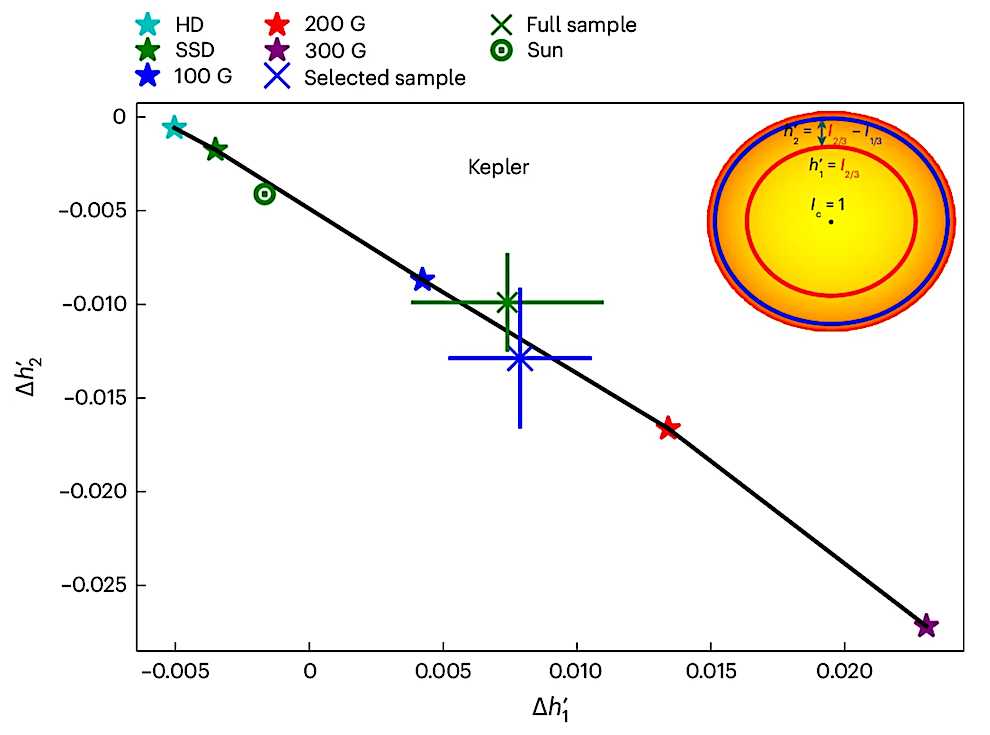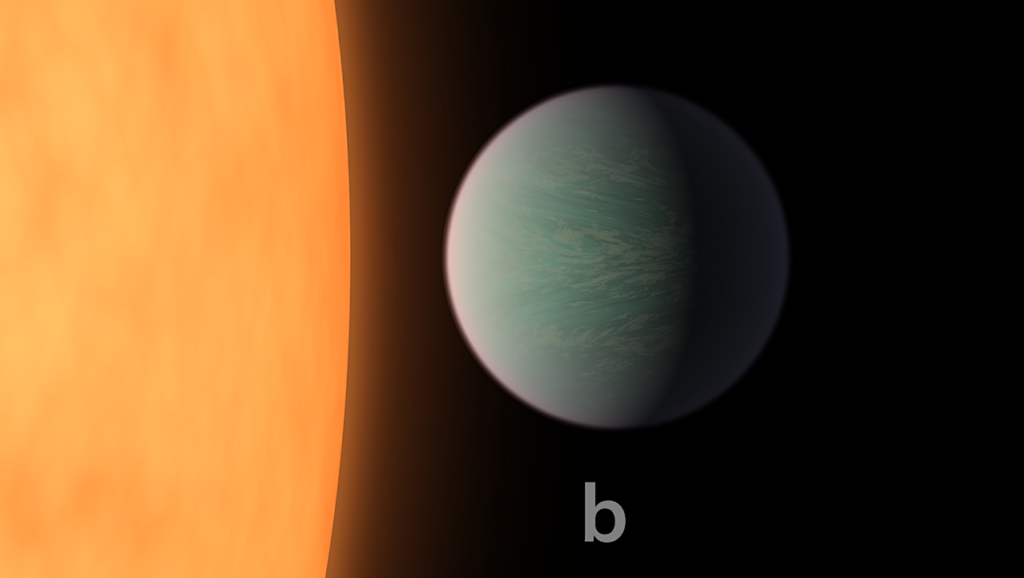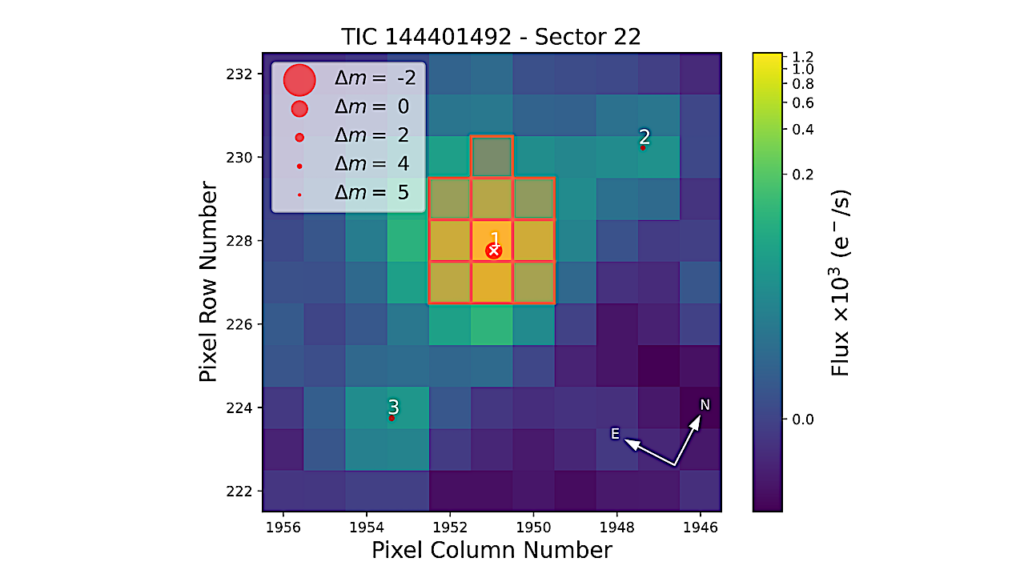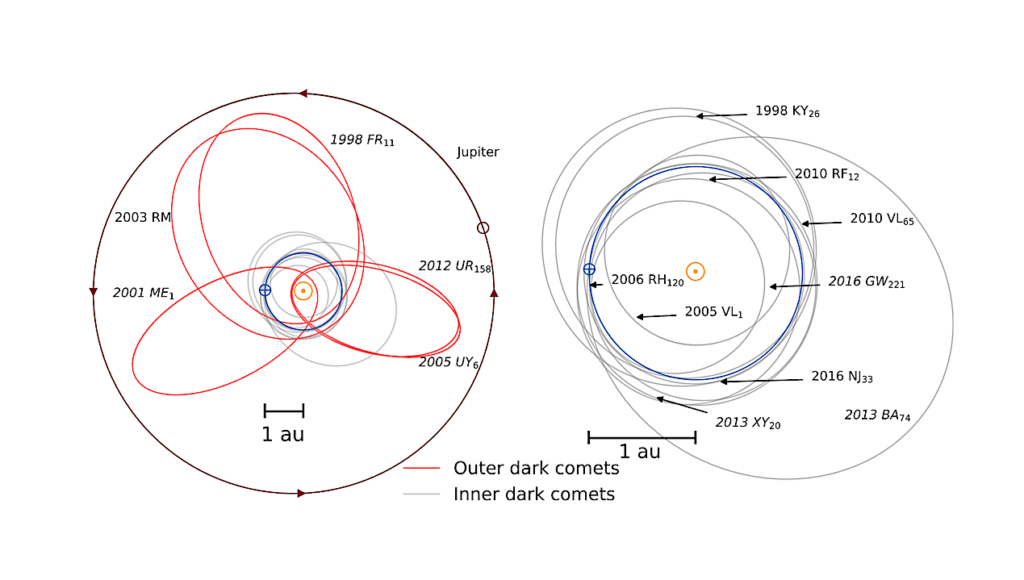Exoplanets True To Size

700 light years away from Earth in the constellation Virgo, the planet WASP-39b orbits the star WASP-39.
The gas giant, which takes little more than four days to complete one orbit, is one of the best-studied exoplanets: Shortly after its commissioning in July 2022, NASA’s James Webb Space Telescope turned its high-precision gaze on the distant planet.
The data revealed evidence of large quantities of water vapor, of methane and even, for the first time, of carbon dioxide in the atmosphere of WASP-39b. A minor sensation! But there is still one fly in the ointment: researchers have not yet succeeded in reproducing all the crucial details of the observations in model calculations. This stands in the way of an even more precise analyses of the data. In the new study led by the MPS, the authors, including researchers from the Massachusetts Institute of Technology (USA), the Space Telescope Science Institute (USA), Keele University (United Kingdom), and the University of Heidelberg (Germany), show a way to overcome this obstacle.
“The problems arising when interpreting the data from WASP-39b are well known from many other exoplanets – regardless whether they are observed with Kepler, TESS, James Webb, or the future PLATO spacecraft,” explains MPS scientist Dr. Nadiia Kostogryz, first author of the new study. “As with other stars orbited by exoplanets, the observed light curve of WASP-39 is flatter than previous models can explain,” she adds.
Researchers define a light curve as a measurement of the brightness of a star over a longer period of time. The brightness of a star fluctuates constantly, for example because its luminosity is subject to natural fluctuations. Exoplanets can also leave traces in the light curve. If an exoplanet passes in front of its star as seen by an observer, it dims the starlight. This is reflected in the light curve as a regularly recurring drop in brightness. Precise evaluations of such curves provide information about the size and orbital period of the planet. Researchers can also obtain information about the composition of the planet’s atmosphere, if the light from the star is split into its different wavelengths or colours.
A close look at a star’s brightness distribution
The limb of a star, the edge of the stellar disk, plays a decisive role in the interpretation of its light curve. Just as in the case of the Sun, the limb appears darker to the observer than the inner area. However, the star does not actually shine less brightly further out. “As the star is a sphere and its surface curved, we look into higher and therefore cooler layers at the limb than in the center,” explains coauthor and MPS-Director Prof. Dr. Laurent Gizon. “This area therefore appears darker to us,” he adds.
It is known that the limb darkening affects the exact shape of the exoplanet signal in the light curve: The dimming determines how steeply the brightness of a star falls during a planetary transit and then rises again. However, it has not been possible to reproduce observational data accurately using conventional models of the stellar atmosphere. The decrease of brightness was always less abrupt than the model calculations suggested. “It was clear that we were missing a crucial piece of the puzzle to precisely understand the exoplanets’ signal,” says MPS-Director Prof. Dr. Sami Solanki, coauthor of the current study.
Magnetic field is the missing piece of the puzzle
As the calculations published today show, the missing piece of the puzzle is the stellar magnetic field. Like the Sun, many stars generate a magnetic field deep in their interior through enormous flows of hot plasma. For the first time, the researchers were now able to include the magnetic field in their models of limb darkening. They could show that the strength of the magnetic field has an important effect: The limb darkening is pronounced in stars with a weak magnetic field, while it is weaker in those with a strong magnetic field.
The researchers were also able to prove that the discrepancy between observational data and model calculations disappears if the star’s magnetic field is included in the computations. To this end, the team turned to selected data from NASA’s Kepler Space Telescope, which captured the light of thousands and thousands of stars from 2009 to 2018. In a first step, the scientists modeled the atmosphere of typical Kepler stars in the presence of a magnetic field. In a second step, they then generated “artificial” observational data from these calculations. As a comparison with the real data showed, by including the magnetic field, the Kepler data is successfully reproduced.
The team also extended its considerations to data from the James Webb Space Telescope. The telescope is able to split the light of distant stars into its various wavelengths and thus search for the characteristic signs of certain molecules in the atmosphere of the discovered planets. As it turns out, the magnetic field of the parent star influences the stellar limb darkening differently at different wavelengths – and should therefore be taken into account in future evaluations in order to achieve even more precise results.
From telescopes to models
“In the past decades and years, the way to move forward in exoplanet research was to improve the hardware, the space telescopes designed to search for and characterize new worlds. The James Webb Space Telescope has pushed this development to new limits”, says Dr. Alexander Shapiro, coauthor of the current study and head of an ERC-funded research group at the MPS. “The next step is now to improve and refine the models to interpret this excellent data”, he adds.
To further advance this development, the researchers now want to extend their analyses to stars that are clearly different from the Sun. In addition, their findings offer the possibility of using the light curves of stars with exoplanets to infer the strength of the stellar magnetic field, which is otherwise often hard to measure.

The x and y axes express the difference in the limb-darkening coefficients ( and ) between two sources: one source is always the models without magnetic fields (REFLD) and the other can be models with either fields or observations. The points marked by a cross correspond to the data averaged over the full sample of Kepler stars (green) and over a selected sample including the stars with metallicities −0.1 < M/H < 0.1 and transits with an impact factor less than 0.5 (blue). The error bars represent s.e.m. These points show the mean offset between measurements12 and REFLD15. The star symbols are our calculations based on MURaM simulations (that is, offsets between our calculations and REFLD) for different magnetization levels (see legend; HD, SSD, 100 G, 200 G, 300 G) in the Kepler passband. The sketch in the right upper corner illustrates the definition of the limb darkening coefficients, where Ic represents the intensity at the disk center, I2/3 represents the intensity at μ = 2/3 and I1/3 represents the intensity at μ = 1/3. All intensities are normalized to the intensity at the disk center. The solar symbol (Sun) is the measured solar limb darkening in the Kepler passband15. Our stellar atmosphere models, which include magnetic fields, match both the solar and the stellar observations and provide an explanation for the offsets between Kepler limb darkening relative to models without magnetic field. — Nature Astronomy
Magnetic origin of the discrepancy between stellar limb-darkening models and observations, Nature Astronomy (open access)
Astrobiology








